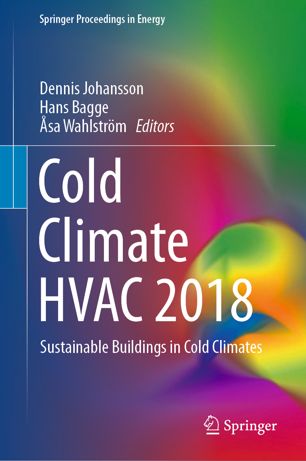

Most ebook files are in PDF format, so you can easily read them using various software such as Foxit Reader or directly on the Google Chrome browser.
Some ebook files are released by publishers in other formats such as .awz, .mobi, .epub, .fb2, etc. You may need to install specific software to read these formats on mobile/PC, such as Calibre.
Please read the tutorial at this link: https://ebookbell.com/faq
We offer FREE conversion to the popular formats you request; however, this may take some time. Therefore, right after payment, please email us, and we will try to provide the service as quickly as possible.
For some exceptional file formats or broken links (if any), please refrain from opening any disputes. Instead, email us first, and we will try to assist within a maximum of 6 hours.
EbookBell Team

4.4
72 reviewsThis volume presents the proceedings of the 9th Cold Climate HVAC conference, which was held in Kiruna, Sweden in 2018. The conference highlighted key technologies and processes that allow scientists, designers, engineers, manufacturers and other decision makers in cold climate regions to achieve good indoor environmental quality (IEQ) with a minimum use of energy and other resources. The conference addressed various technical, economic and social aspects of buildings and HVAC systems in new and renovated buildings. This proceedings volume gathers peer-reviewed papers by a diverse and international range of authors and showcases perspectives and practices in cold climate building design from around the globe. The following major aspects, which include both fundamental and theoretical research as well as applications and case studies, are covered: (1) Energy and power efficiency and low-energy buildings; (2) Renovating buildings; (3) Efficient HVAC components; (4) Heat pumps and geothermal systems; (5) Municipal and city energy systems; (6) Construction management; (7) Buildings in operation; (8) Building simulation; (9) Reference data; (10) Transdisciplinary connections and social aspects; (11) Indoor environments and health; (12) Moisture safety and water damage; (13) Codes, regulations, standards and policies; and (14) Other aspects of buildings in cold climates.